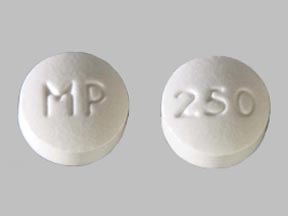Chenodeoxycholic acid Side Effects
Medically reviewed by Drugs.com. Last updated on Oct 13, 2023.
Applies to chenodeoxycholic acid: oral tablet.
Warning
Oral route (Tablet)
Because of the potential hepatotoxicity of chenodiol, poor response rate in some subgroups of chenodiol treated patients, and an increased rate of a need for cholecystectomy in other chenodiol treated subgroups, chenodiol is not an appropriate treatment for many patients with gallstones. Chenodiol should be reserved for carefully selected patients and treatment must be accompanied by systematic monitoring for liver function alterations. Aspects of patient selection, response rates and risks versus benefits are given in the insert.
Serious side effects
Along with its needed effects, chenodeoxycholic acid may cause some unwanted effects. Although not all of these side effects may occur, if they do occur they may need medical attention.
Check with your doctor immediately if any of the following side effects occur while taking chenodeoxycholic acid:
Incidence not known
- Black, tarry stools
- chest pain
- chills
- cough
- fever
- painful or difficult urination
- shortness of breath
- sore throat
- sores, ulcers, or white spots on the lips or in the mouth
- swollen glands
- unusual bleeding or bruising
- unusual tiredness or weakness
Other side effects
Some side effects of chenodeoxycholic acid may occur that usually do not need medical attention. These side effects may go away during treatment as your body adjusts to the medicine. Also, your health care professional may be able to tell you about ways to prevent or reduce some of these side effects.
Check with your health care professional if any of the following side effects continue or are bothersome or if you have any questions about them:
More common
Less common
- Abdominal or stomach pain
- acid or sour stomach
- belching
- bloated
- cramps
- difficulty having a bowel movement (stool)
- excess air or gas in the stomach or intestines
- full feeling
- heartburn
- indigestion
- loss of appetite
- nausea and vomiting
- pain in the chest below the breastbone
- pain or discomfort in chest, upper stomach, or throat
- passing gas
- stomach discomfort or upset
- weight loss
For Healthcare Professionals
Applies to chenodeoxycholic acid: oral tablet.
Gastrointestinal
Frequency not reported: Constipation/mild intermittent constipation, cramps, diarrhea, dyspepsia, epigastric distress, flatulence, gastrostomy, heartburn, nausea, nonspecific abdominal pain, urgency, vomiting[Ref]
Hepatic
Frequency not reported: ALT elevations, biliary colic, cholecystectomy, hepatic adverse reactions, intrahepatic cholestasis, lithiasis, lithocholate-like lesions in the canalicular membrane, serum transaminase elevations, toxic hepatitis[Ref]
Metabolic
Frequency not reported: Anorexic, increased serum low density lipoprotein (LDL) cholesterol, increased serum total cholesterol, small decreases in serum triglyceride levels[Ref]
Serum total cholesterol and LDL cholesterol may increase by at least 10%.
Small decreases in serum triglycerides occurred in female patients.[Ref]
Musculoskeletal
Frequency not reported: Humerus fracture, foot operation, rheumatoid arthritis[Ref]
Cardiovascular
Frequency not reported: Angina pectoris[Ref]
Respiratory
Frequency not reported: Pneumothorax[Ref]
Hematologic
Frequency not reported: Decreases in while cell count[Ref]
Genitourinary
Frequency not reported: Urinary incontinence[Ref]
Ocular
Frequency not reported: Cataract operation[Ref]
Other
Frequency not reported: Fatigue[Ref]
Psychiatric
Frequency not reported: Depression[Ref]
More about chenodeoxycholic acid
- Check interactions
- Compare alternatives
- Dosage information
- During pregnancy
- Drug class: gallstone solubilizing agents
- En español
Patient resources
Other brands
Professional resources
Other brands
Related treatment guides
References
1. EMEA. European Medicines Agency. EPARs. European Union Public Assessment Reports. http://www.ema.europa.eu/ema/index.jsp?curl=pages/includes/medicines/medicines_landingpage.jsp&mid 2007.
2. Product Information. Chenodal (chenodeoxycholic acid). Manchester Pharmaceutical. 2009.
Further information
Always consult your healthcare provider to ensure the information displayed on this page applies to your personal circumstances.
Some side effects may not be reported. You may report them to the FDA.

